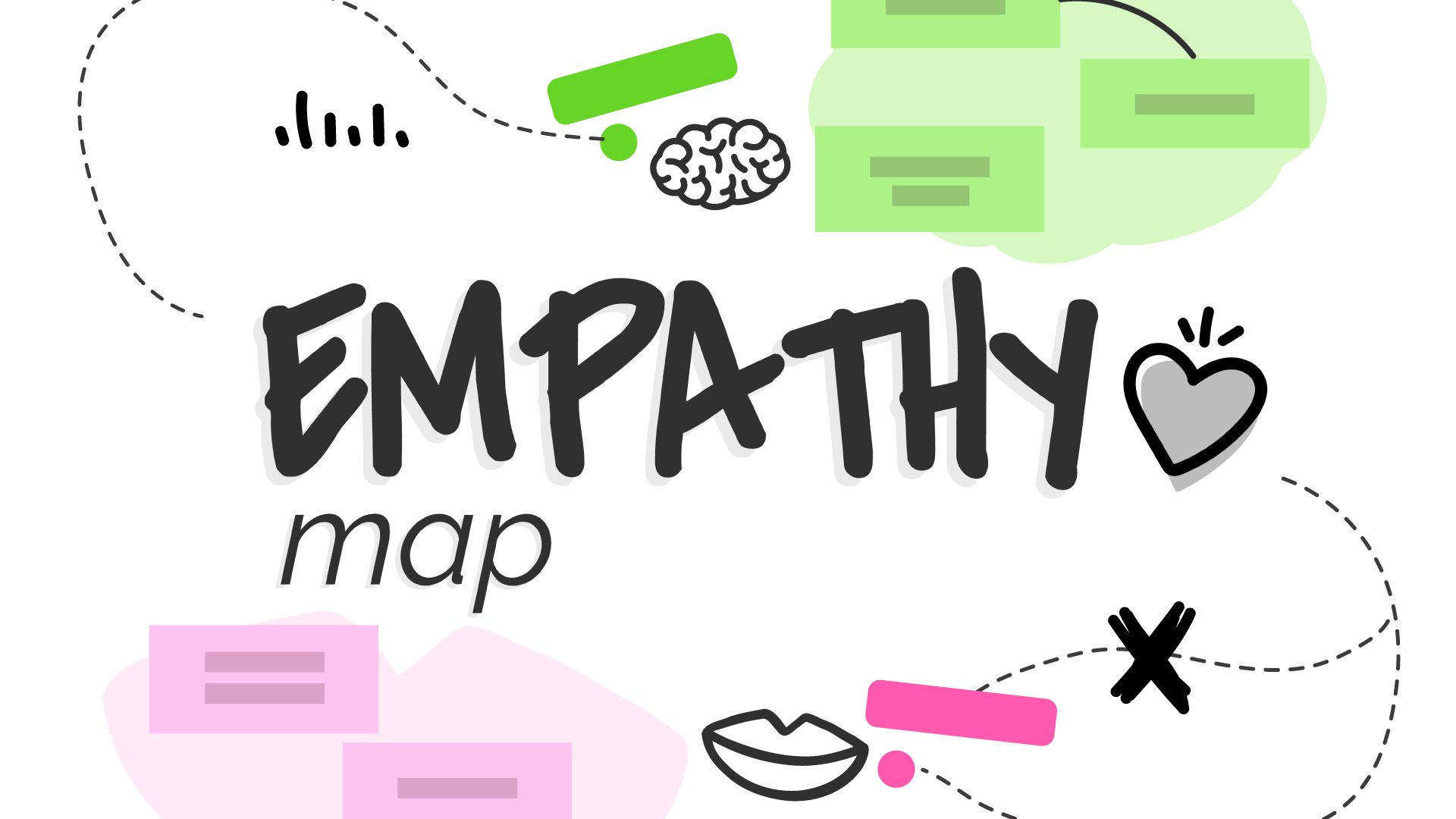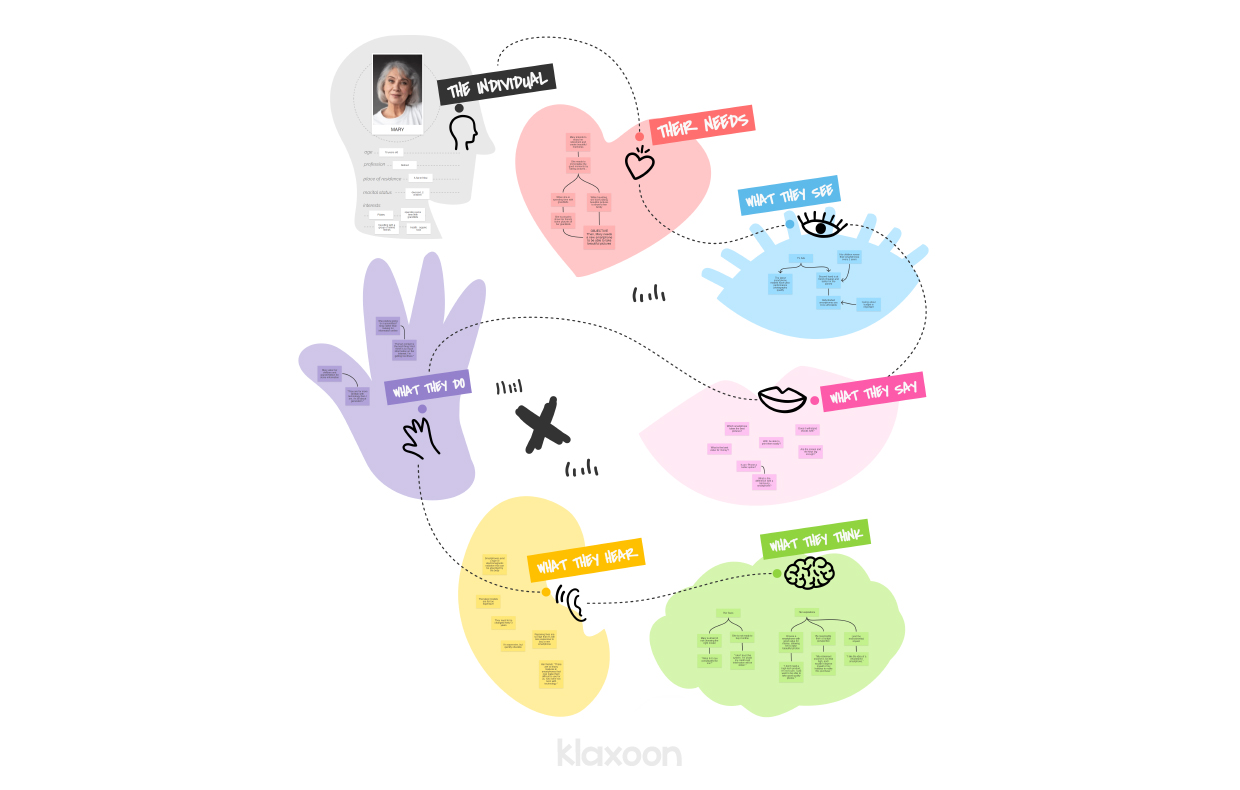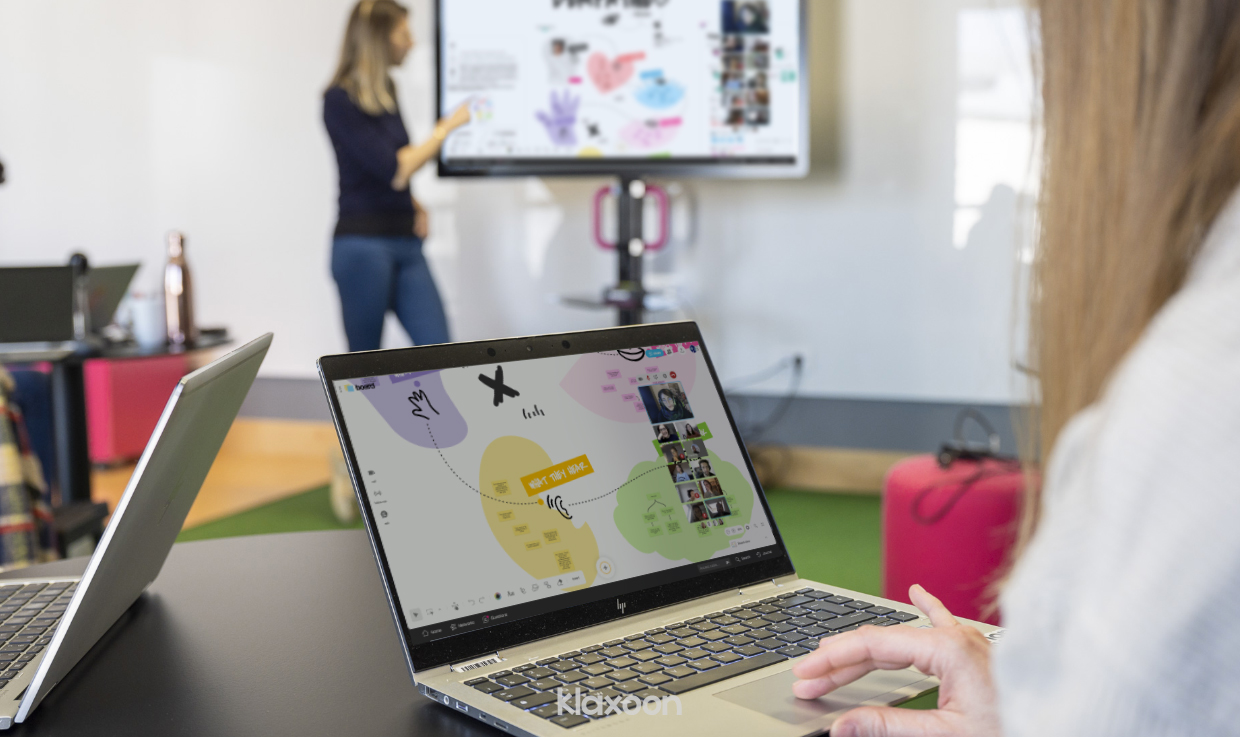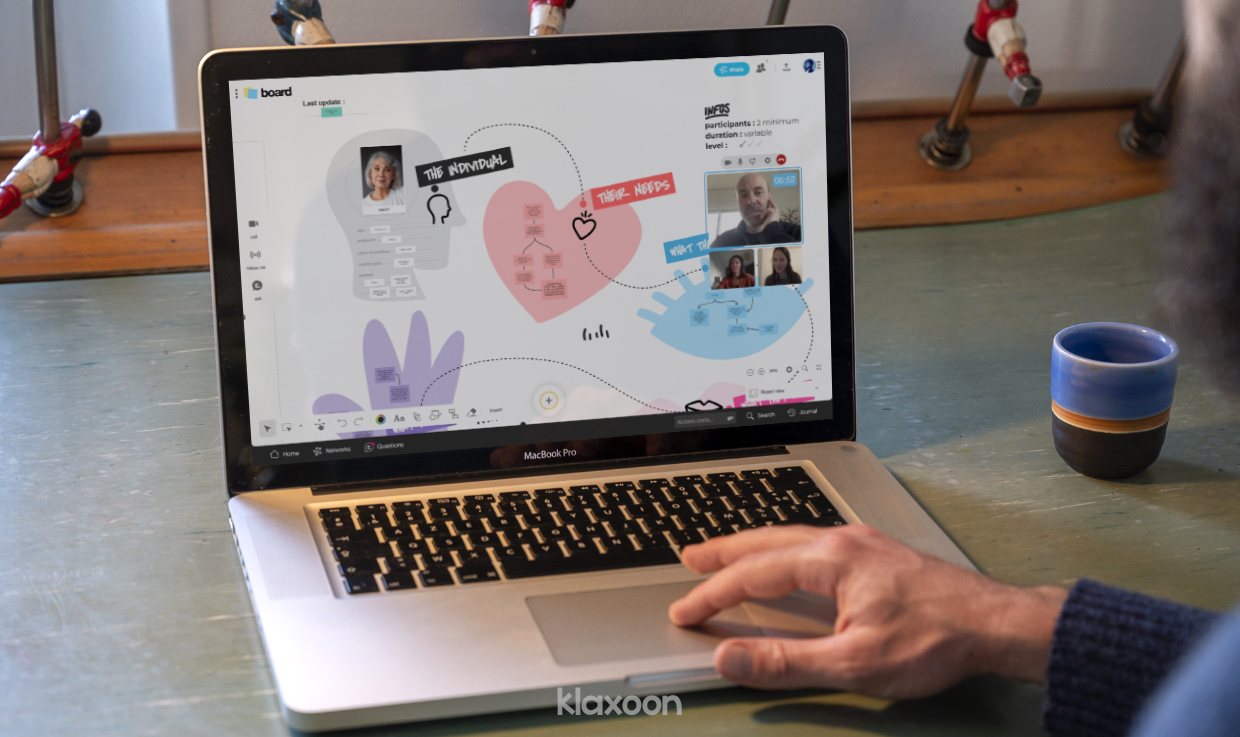The empathy map: put yourself in the shoes of a persona to better understand them
Published on September 18, 2025
The empathy map: put yourself in the shoes of a persona to better understand them


The empathy map is a visual tool for collaborative use to refine a persona, a fictional character representing a type of customer you are targeting and want to understand better. How? By asking questions as a team on the following seven points: the individual, their needs, what they see, what they say, what they do, what they hear, and what they think. As a team, use your ability to empathize with others to complete this ready-to-use template!
Empathy map is a tool developed by Dave Gray, head of an information design consulting agency. This matrix appeared in his work Gamestorming: A Playbook for Innovators, Rulebreakers, and Changemakers published in 2010. It is based on the premise that the better a company knows its customers, the better it develops its ability to design products and services that will be useful to them.
But then, why do we need an empathy map? Simply because empathy is our ability, as human beings, to put ourselves in another person’s shoes to try to understand their feelings and sentiments. Developing empathy towards your sales target means trying to feel how they would feel and, therefore, understanding their needs, their obstacles, and their desires. All in all, it’s a very useful tool for refining personas. While building up a persona focuses on defining their characteristics, the empathy map will focus on their behavior.
Originally, it was a visualization method to represent the different supposed expectations of a persona.
First, regarding the goals of this persona:
Then, their environment:
And finally, their fears and aspirations:
By asking these questions, you will be able to identify the external elements that are close to your prospects and that influence their buying behavior. The empathy map also aims to create a better user experience by looking at things from the customer’s perspective, and identifying ways to improve what they see, hear, and think while meeting their expectations.
Be careful, however, not to project your own feelings or sentiments onto your target. An empathy map is most accurate when it is developed collectively.


The seven zones of the empathy map are meant to help you better understand your persona.
Establishing personas is a must-do for any marketing strategy. Trying to sell a family station wagon to a student looking for their first city car makes no sense. So, you build a strategy based on your prospects. The empathy map is the ideal collaborative tool for better understanding their personality.
A well-executed empathy map will give you valuable insights and provide you with a clear direction for developing your marketing strategy, your editorial line, and your business model.
By determining what your customers want, how they get their information, what channels of influence they have, you can more easily build up your strategy.
For example, if your preferred target is used to following content creators on social networks, you will probably want to run a promotional campaign relayed by these same creators.
Similarly, if you notice that they like to listen to podcasts or watch short videos, you will adapt your editorial line accordingly. The empathy map will allow you to gather all this information.
Board is a digital whiteboard whose limitless virtual workspace allows you to share ideas (text, images, videos, documents, links, etc.) in the form of colored sticky notes, for a highly visual rendering. It allows each member of the team to express their point of view. And thanks to the integrated Live videoconferencing tool, all the participants can meet and discuss in real time, in the meeting room and/or remotely.
Each empathy map needs to be updated regularly. With Board, you keep all relevant information in one place and can easily update outdated information. And you make sure you keep track of everything. With Board, you can easily spell out the facts of your discussions.


In a meeting room and/or remotely, Board allows a team of several people to co-construct an empathy map.
Before you meet as a team, everyone can express their views individually, asynchronously.
First, the instigator completes the description of the “individual”. And from this information, all the team members can complete the other elements on their own, using the color code. To determine which ideas you want to keep, you can already indicate the ones you like best, using the heart button. This way, you really focus on what’s important when you get together.
Then, everyone meets at the same time to discuss and agree on the ideas shared:
The purpose is to get an overview of their socio-demographic profile (age, profession, gender, place of residence, marital status, interests, and any other useful information). To fill in this part, please refer to the data already collected when developing your persona.
To complete the following areas of the empathy map, determine whether your persona is a prospect or a customer. Because for a prospect, you put yourself in their shoes as they seek to achieve a goal. For example, Mary, a dynamic retiree, needs a new smartphone that will allow her to take beautiful pictures when she spends time with her grandchildren or when she travels.
For a customer, you put yourself in their shoes while they are already using your product or service.
To do this, ask yourself a few questions:


Start by determining your persona’s needs to put yourself in their shoes and develop the empathy map.
Put yourself in your persona’s shoes and describe what they might see around them. How do their environment and the market look like? How do other people behave? To illustrate your point, you can also share visuals (images, videos,...).
Note what your persona might say. Add any information you may have gathered from qualitative research.
Put yourself in the shoes of your persona and write down what they might do. You can also make observations during usability tests, for example, during a focus group.
Putting yourself in your persona’s shoes, think about what their family, friends, colleagues, or even strangers could say to them. Depending on the people around them, what they hear would have more or less weight and importance, but it can eventually have a positive or negative impact on your product or service.
Put yourself in your persona’s shoes and imagine the thoughts that might influence their behavior:
Get inspired by other templates from the same categories
Unlock your teamwork potential